
habitat-lab
A modular high-level library to train embodied AI agents across a variety of tasks and environments.
Stars: 2237
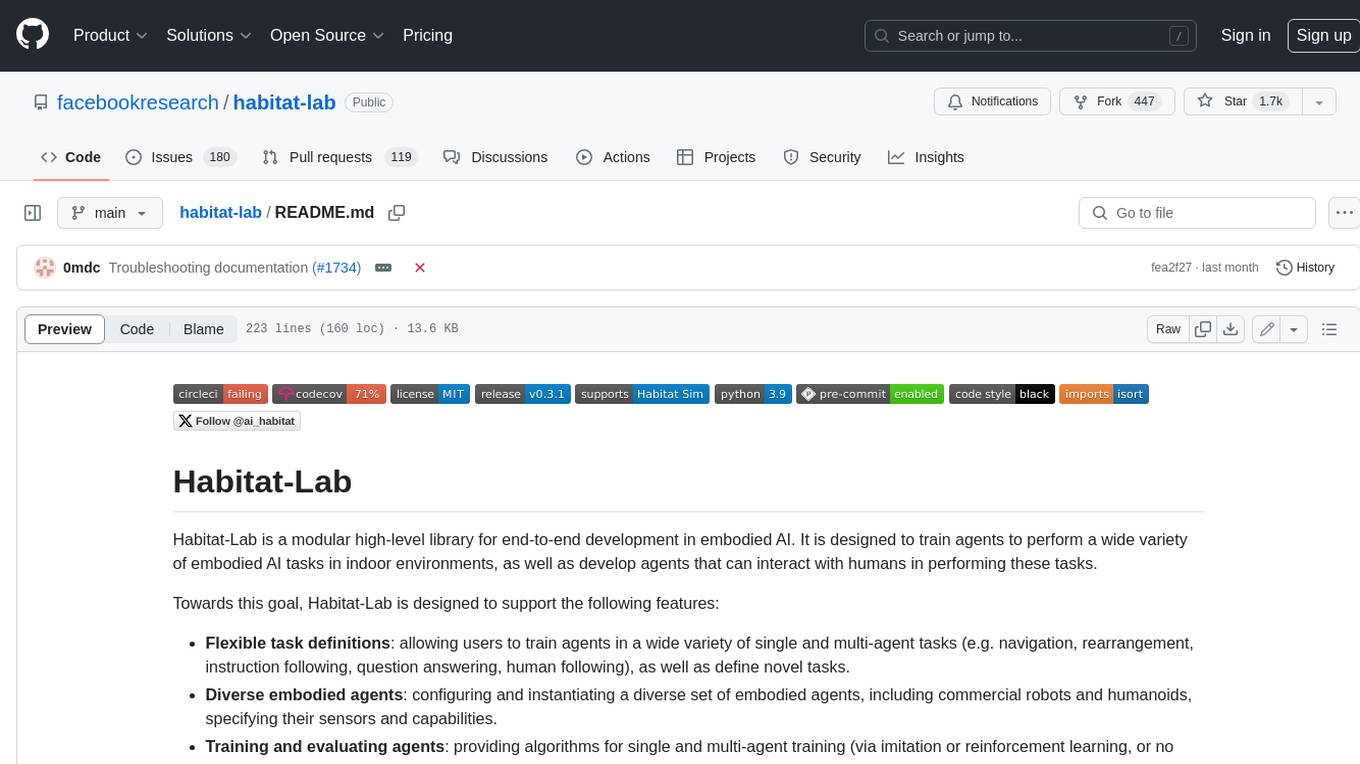
Habitat-Lab is a modular high-level library for end-to-end development in embodied AI. It is designed to train agents to perform a wide variety of embodied AI tasks in indoor environments, as well as develop agents that can interact with humans in performing these tasks.
README:
Habitat-Lab is a modular high-level library for end-to-end development in embodied AI. It is designed to train agents to perform a wide variety of embodied AI tasks in indoor environments, as well as develop agents that can interact with humans in performing these tasks.
Towards this goal, Habitat-Lab is designed to support the following features:
- Flexible task definitions: allowing users to train agents in a wide variety of single and multi-agent tasks (e.g. navigation, rearrangement, instruction following, question answering, human following), as well as define novel tasks.
- Diverse embodied agents: configuring and instantiating a diverse set of embodied agents, including commercial robots and humanoids, specifying their sensors and capabilities.
- Training and evaluating agents: providing algorithms for single and multi-agent training (via imitation or reinforcement learning, or no learning at all as in SensePlanAct pipelines), as well as tools to benchmark their performance on the defined tasks using standard metrics.
- Human in the loop interaction: providing a framework for humans to interact with the simulator, enabling to collect embodied data or interact with trained agents.
Habitat-Lab uses Habitat-Sim as the core simulator. For documentation refer here.
If you use the Habitat platform in your research, please cite the Habitat 1.0, Habitat 2.0, and Habitat 3.0 papers:
@misc{puig2023habitat3,
title = {Habitat 3.0: A Co-Habitat for Humans, Avatars and Robots},
author = {Xavi Puig and Eric Undersander and Andrew Szot and Mikael Dallaire Cote and Ruslan Partsey and Jimmy Yang and Ruta Desai and Alexander William Clegg and Michal Hlavac and Tiffany Min and Theo Gervet and Vladimír Vondruš and Vincent-Pierre Berges and John Turner and Oleksandr Maksymets and Zsolt Kira and Mrinal Kalakrishnan and Jitendra Malik and Devendra Singh Chaplot and Unnat Jain and Dhruv Batra and Akshara Rai and Roozbeh Mottaghi},
year={2023},
archivePrefix={arXiv},
}
@inproceedings{szot2021habitat,
title = {Habitat 2.0: Training Home Assistants to Rearrange their Habitat},
author = {Andrew Szot and Alex Clegg and Eric Undersander and Erik Wijmans and Yili Zhao and John Turner and Noah Maestre and Mustafa Mukadam and Devendra Chaplot and Oleksandr Maksymets and Aaron Gokaslan and Vladimir Vondrus and Sameer Dharur and Franziska Meier and Wojciech Galuba and Angel Chang and Zsolt Kira and Vladlen Koltun and Jitendra Malik and Manolis Savva and Dhruv Batra},
booktitle = {Advances in Neural Information Processing Systems (NeurIPS)},
year = {2021}
}
@inproceedings{habitat19iccv,
title = {Habitat: {A} {P}latform for {E}mbodied {AI} {R}esearch},
author = {Manolis Savva and Abhishek Kadian and Oleksandr Maksymets and Yili Zhao and Erik Wijmans and Bhavana Jain and Julian Straub and Jia Liu and Vladlen Koltun and Jitendra Malik and Devi Parikh and Dhruv Batra},
booktitle = {Proceedings of the IEEE/CVF International Conference on Computer Vision (ICCV)},
year = {2019}
}
-
Preparing conda env
Assuming you have conda installed, let's prepare a conda env:
# We require python>=3.9 and cmake>=3.14 conda create -n habitat python=3.9 cmake=3.14.0 conda activate habitat -
conda install habitat-sim
- To install habitat-sim with bullet physics
Note, for newer features added after the most recent release, you may need to installconda install habitat-sim withbullet -c conda-forge -c aihabitataihabitat-nightly. See Habitat-Sim's installation instructions for more details.
- To install habitat-sim with bullet physics
-
pip install habitat-lab stable version.
git clone --branch stable https://github.com/facebookresearch/habitat-lab.git cd habitat-lab pip install -e habitat-lab # install habitat_lab
-
Install habitat-baselines.
The command above will install only core of Habitat-Lab. To include habitat_baselines along with all additional requirements, use the command below after installing habitat-lab:
pip install -e habitat-baselines # install habitat_baselines
-
Let's download some 3D assets using Habitat-Sim's python data download utility:
-
Download (testing) 3D scenes:
python -m habitat_sim.utils.datasets_download --uids habitat_test_scenes --data-path data/
Note that these testing scenes do not provide semantic annotations.
-
Download point-goal navigation episodes for the test scenes:
python -m habitat_sim.utils.datasets_download --uids habitat_test_pointnav_dataset --data-path data/
-
-
Non-interactive testing: Test the Pick task: Run the example pick task script
python examples/example.py
which uses
habitat-lab/habitat/config/benchmark/rearrange/skills/pick.yamlfor configuration of task and agent. The script roughly does this:import gym import habitat.gym # Load embodied AI task (RearrangePick) and a pre-specified virtual robot env = gym.make("HabitatRenderPick-v0") observations = env.reset() terminal = False # Step through environment with random actions while not terminal: observations, reward, terminal, info = env.step(env.action_space.sample())
To modify some of the configurations of the environment, you can also use the
habitat.gym.make_gym_from_configmethod that allows you to create a habitat environment using a configuration.config = habitat.get_config( "benchmark/rearrange/skills/pick.yaml", overrides=["habitat.environment.max_episode_steps=20"] ) env = habitat.gym.make_gym_from_config(config)
If you want to know more about what the different configuration keys overrides do, you can use this reference.
See
examples/register_new_sensors_and_measures.pyfor an example of how to extend habitat-lab from outside the source code. -
Interactive testing: Using you keyboard and mouse to control a Fetch robot in a ReplicaCAD environment:
# Pygame for interactive visualization, pybullet for inverse kinematics pip install pygame==2.0.1 pybullet==3.0.4 # Interactive play script python examples/interactive_play.py --never-end
Use I/J/K/L keys to move the robot base forward/left/backward/right and W/A/S/D to move the arm end-effector forward/left/backward/right and E/Q to move the arm up/down. The arm can be difficult to control via end-effector control. More details in documentation. Try to move the base and the arm to touch the red bowl on the table. Have fun!
Note: Interactive testing currently fails on Ubuntu 20.04 with an error:
X Error of failed request: BadAccess (attempt to access private resource denied). We are working on fixing this, and will update instructions once we have a fix. The script works without errors on MacOS.
Our vectorized environments are very fast, but they are not very verbose. When using VectorEnv some errors may be silenced, resulting in process hanging or multiprocessing errors that are hard to interpret. We recommend setting the environment variable HABITAT_ENV_DEBUG to 1 when debugging (export HABITAT_ENV_DEBUG=1) as this will use the slower, but more verbose ThreadedVectorEnv class. Do not forget to reset HABITAT_ENV_DEBUG (unset HABITAT_ENV_DEBUG) when you are done debugging since VectorEnv is much faster than ThreadedVectorEnv.
Browse the online Habitat-Lab documentation and the extensive tutorial on how to train your agents with Habitat. For Habitat 2.0, use this quickstart guide.
We provide docker containers for Habitat, updated approximately once per year for the Habitat Challenge. This works on machines with an NVIDIA GPU and requires users to install nvidia-docker. To setup the habitat stack using docker follow the below steps:
-
Pull the habitat docker image:
docker pull fairembodied/habitat-challenge:testing_2022_habitat_base_docker -
Start an interactive bash session inside the habitat docker:
docker run --runtime=nvidia -it fairembodied/habitat-challenge:testing_2022_habitat_base_docker -
Activate the habitat conda environment:
conda init; source ~/.bashrc; source activate habitat -
Run the testing scripts as above:
cd habitat-lab; python examples/example.py. This should print out an output like:Agent acting inside environment. Episode finished after 200 steps.
Can't find the answer to your question? Look up for common issues or try asking the developers and community on our Discussions forum.
Common task and episode datasets used with Habitat-Lab.
Habitat-Lab includes reinforcement learning (via PPO) baselines. For running PPO training on sample data and more details refer habitat_baselines/README.md.
ROS-X-Habitat (https://github.com/ericchen321/ros_x_habitat) is a framework that bridges the AI Habitat platform (Habitat Lab + Habitat Sim) with other robotics resources via ROS. ROS-X-Habitat places emphasis on 1) leveraging Habitat Sim v2's physics-based simulation capability and 2) allowing roboticists to access simulation assets from ROS. The work has also been made public as a paper.
Note that ROS-X-Habitat was developed, and is maintained by the Lab for Computational Intelligence at UBC; it has not yet been officially supported by the Habitat Lab team. Please refer to the framework's repository for docs and discussions.
Habitat-Lab is MIT licensed. See the LICENSE file for details.
The trained models and the task datasets are considered data derived from the correspondent scene datasets.
- Matterport3D based task datasets and trained models are distributed with Matterport3D Terms of Use and under CC BY-NC-SA 3.0 US license.
- Gibson based task datasets, the code for generating such datasets, and trained models are distributed with Gibson Terms of Use and under CC BY-NC-SA 3.0 US license.
For Tasks:
Click tags to check more tools for each tasksFor Jobs:
Alternative AI tools for habitat-lab
Similar Open Source Tools

habitat-lab
Habitat-Lab is a modular high-level library for end-to-end development in embodied AI. It is designed to train agents to perform a wide variety of embodied AI tasks in indoor environments, as well as develop agents that can interact with humans in performing these tasks.
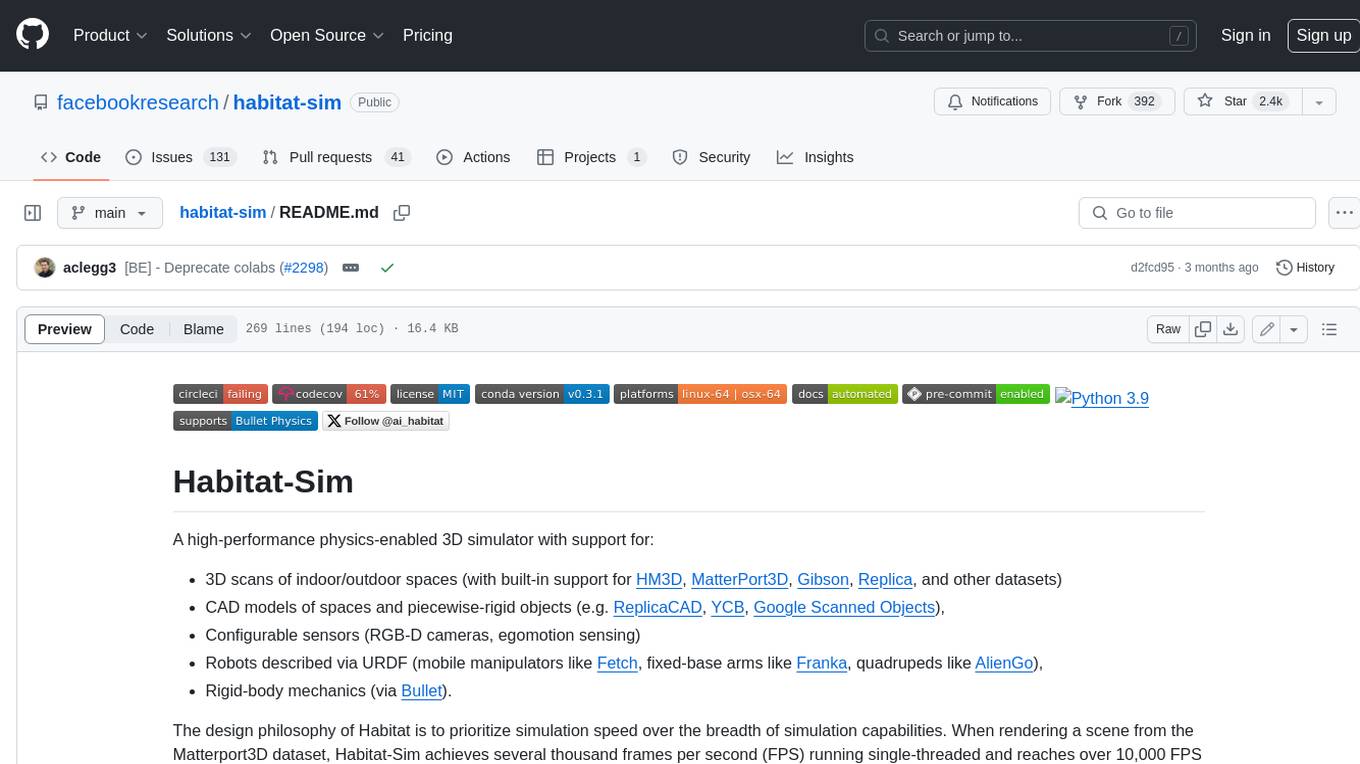
habitat-sim
Habitat-Sim is a high-performance physics-enabled 3D simulator with support for 3D scans of indoor/outdoor spaces, CAD models of spaces and piecewise-rigid objects, configurable sensors, robots described via URDF, and rigid-body mechanics. It prioritizes simulation speed over the breadth of simulation capabilities, achieving several thousand frames per second (FPS) running single-threaded and over 10,000 FPS multi-process on a single GPU when rendering a scene from the Matterport3D dataset. Habitat-Sim simulates a Fetch robot interacting in ReplicaCAD scenes at over 8,000 steps per second (SPS), where each ‘step’ involves rendering 1 RGBD observation (128×128 pixels) and rigid-body dynamics for 1/30sec.
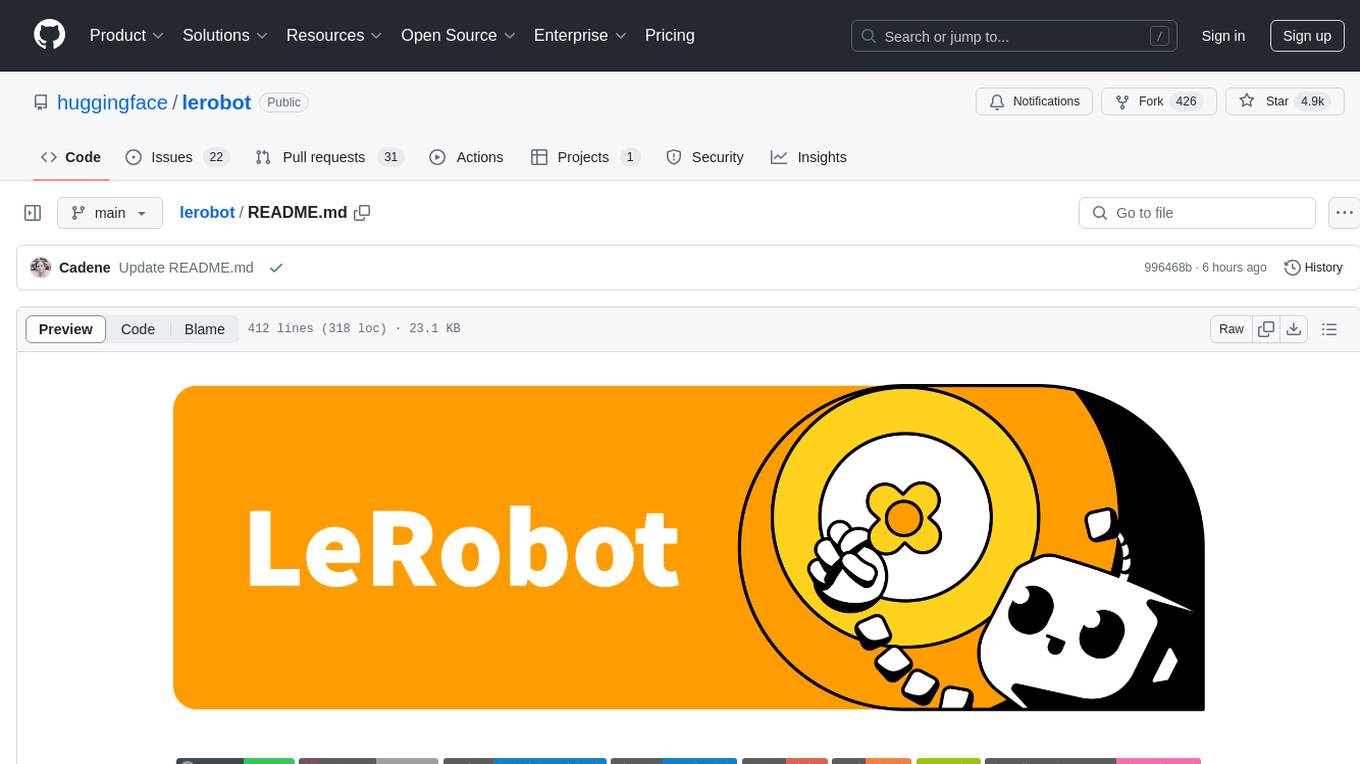
lerobot
LeRobot is a state-of-the-art AI library for real-world robotics in PyTorch. It aims to provide models, datasets, and tools to lower the barrier to entry to robotics, focusing on imitation learning and reinforcement learning. LeRobot offers pretrained models, datasets with human-collected demonstrations, and simulation environments. It plans to support real-world robotics on affordable and capable robots. The library hosts pretrained models and datasets on the Hugging Face community page.
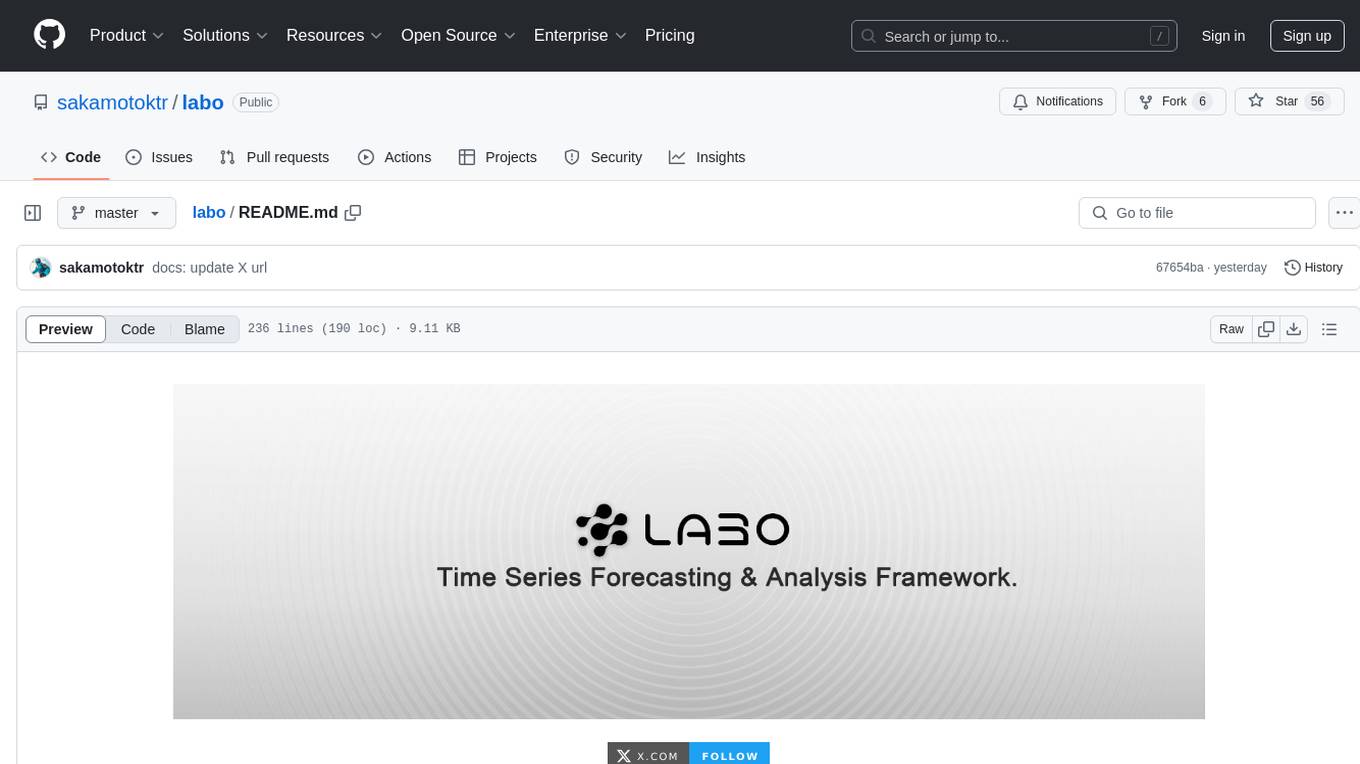
labo
LABO is a time series forecasting and analysis framework that integrates pre-trained and fine-tuned LLMs with multi-domain agent-based systems. It allows users to create and tune agents easily for various scenarios, such as stock market trend prediction and web public opinion analysis. LABO requires a specific runtime environment setup, including system requirements, Python environment, dependency installations, and configurations. Users can fine-tune their own models using LABO's Low-Rank Adaptation (LoRA) for computational efficiency and continuous model updates. Additionally, LABO provides a Python library for building model training pipelines and customizing agents for specific tasks.
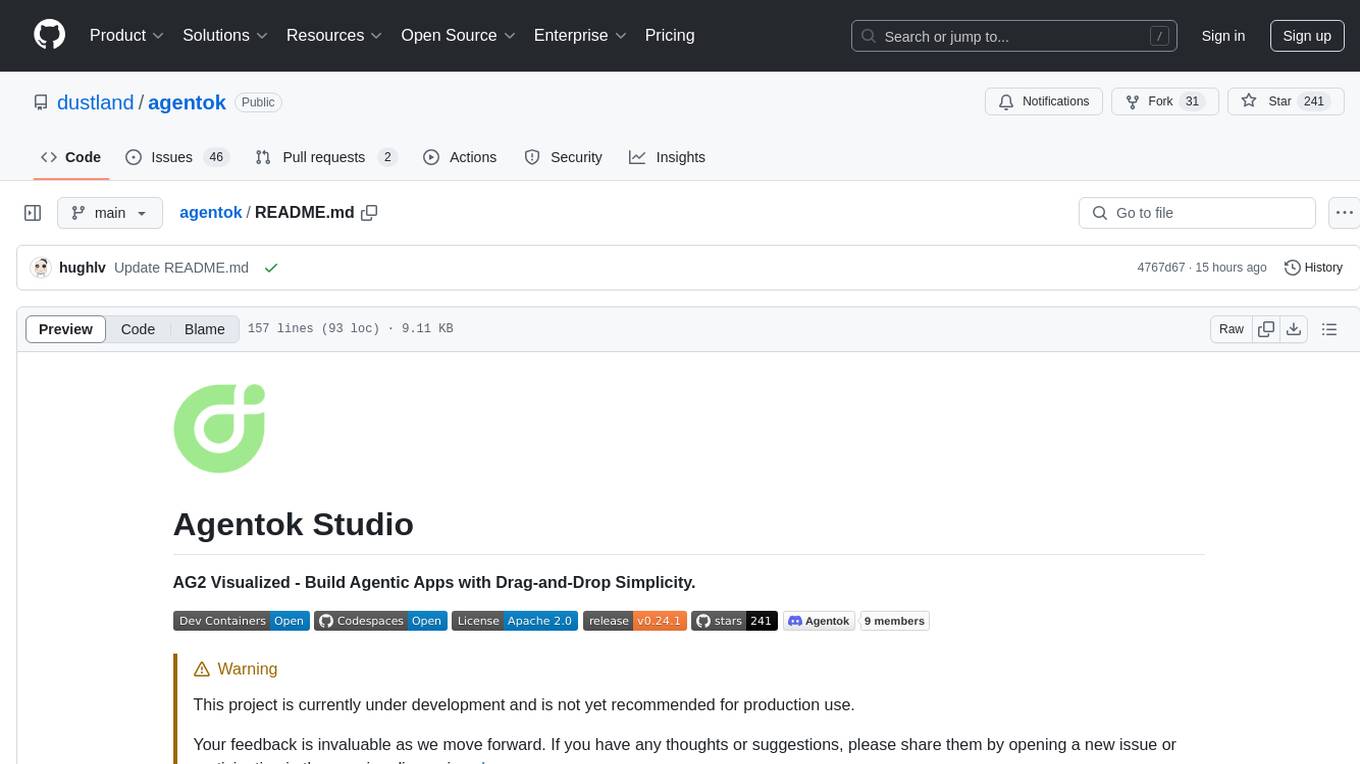
agentok
Agentok Studio is a tool built upon AG2, a powerful agent framework from Microsoft, offering intuitive visual tools to streamline the creation and management of complex agent-based workflows. It simplifies the process for creators and developers by generating native Python code with minimal dependencies, enabling users to create self-contained code that can be executed anywhere. The tool is currently under development and not recommended for production use, but contributions are welcome from the community to enhance its capabilities and functionalities.
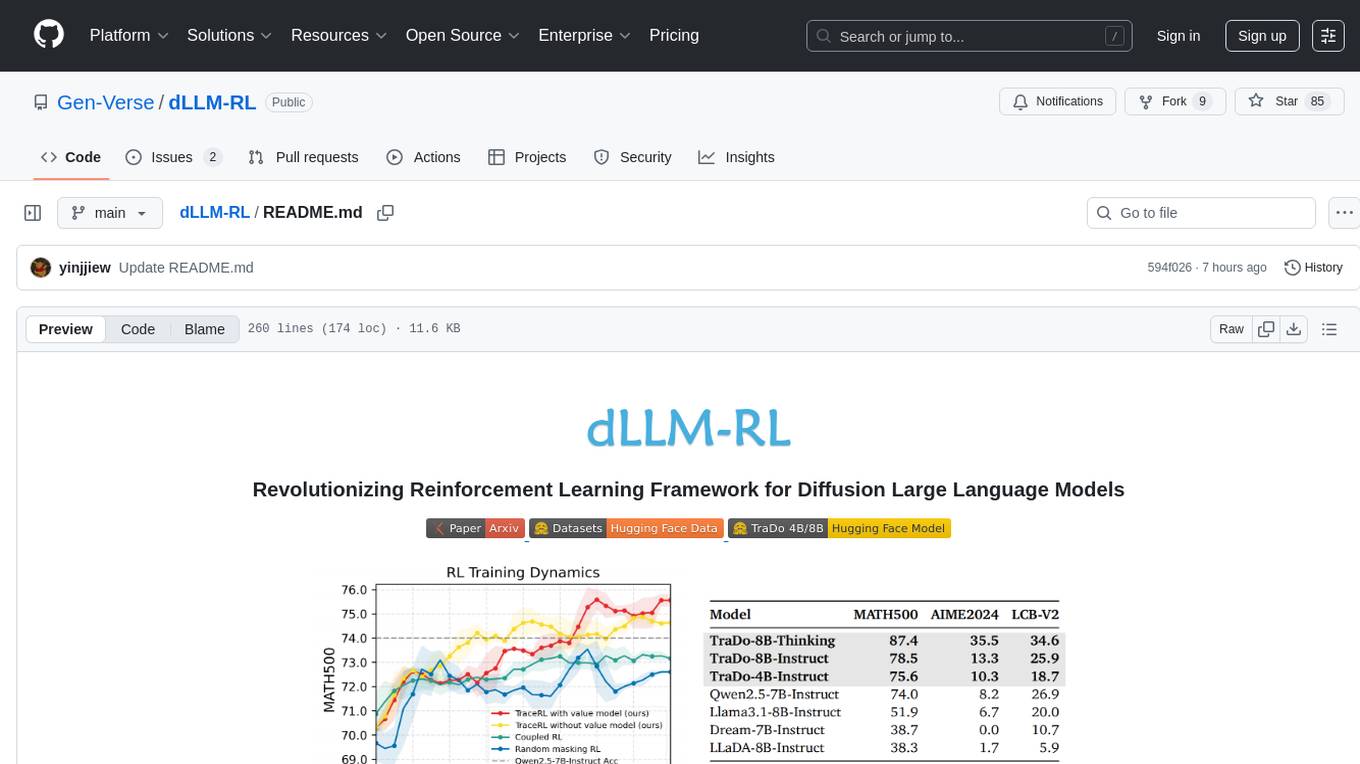
dLLM-RL
dLLM-RL is a revolutionary reinforcement learning framework designed for Diffusion Large Language Models. It supports various models with diverse structures, offers inference acceleration, RL training capabilities, and SFT functionalities. The tool introduces TraceRL for trajectory-aware RL and diffusion-based value models for optimization stability. Users can download and try models like TraDo-4B-Instruct and TraDo-8B-Instruct. The tool also provides support for multi-node setups and easy building of reinforcement learning methods. Additionally, it offers supervised fine-tuning strategies for different models and tasks.
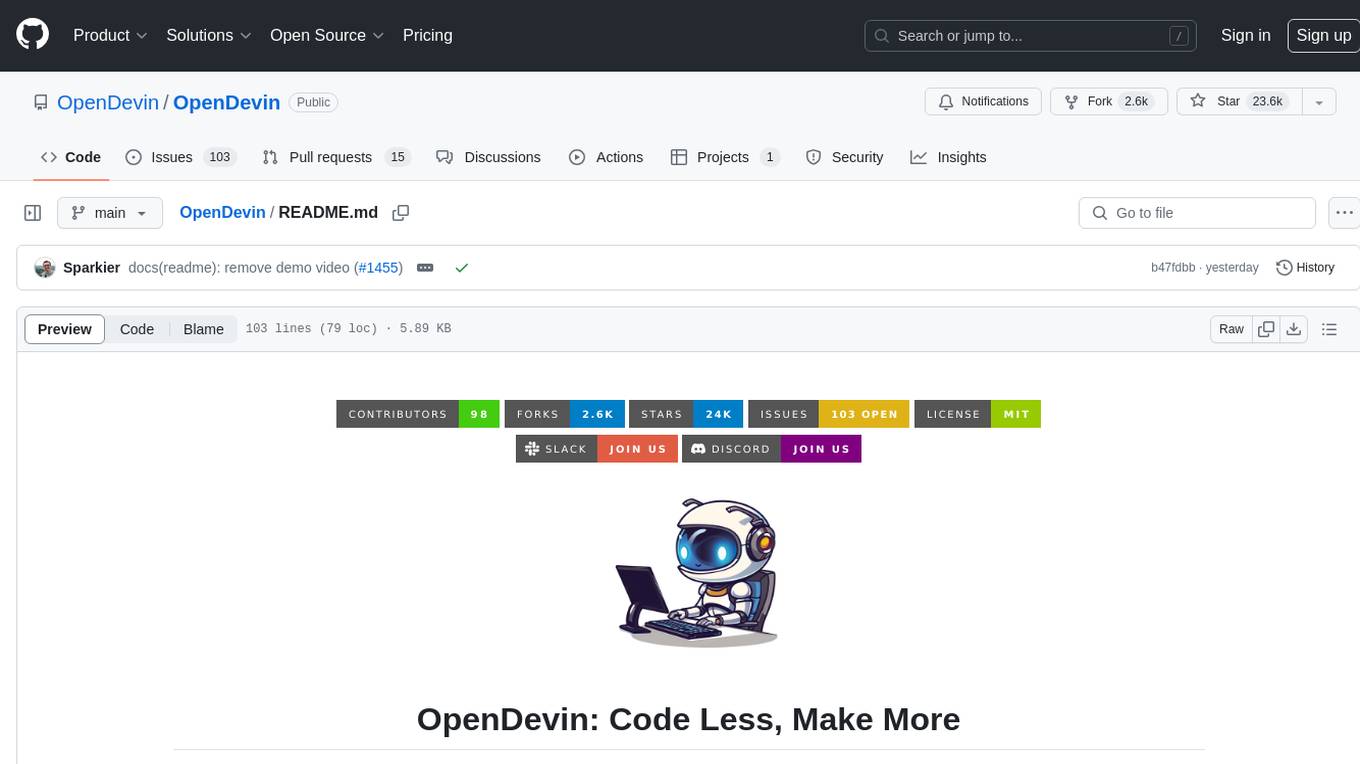
OpenDevin
OpenDevin is an open-source project aiming to replicate Devin, an autonomous AI software engineer capable of executing complex engineering tasks and collaborating actively with users on software development projects. The project aspires to enhance and innovate upon Devin through the power of the open-source community. Users can contribute to the project by developing core functionalities, frontend interface, or sandboxing solutions, participating in research and evaluation of LLMs in software engineering, and providing feedback and testing on the OpenDevin toolset.
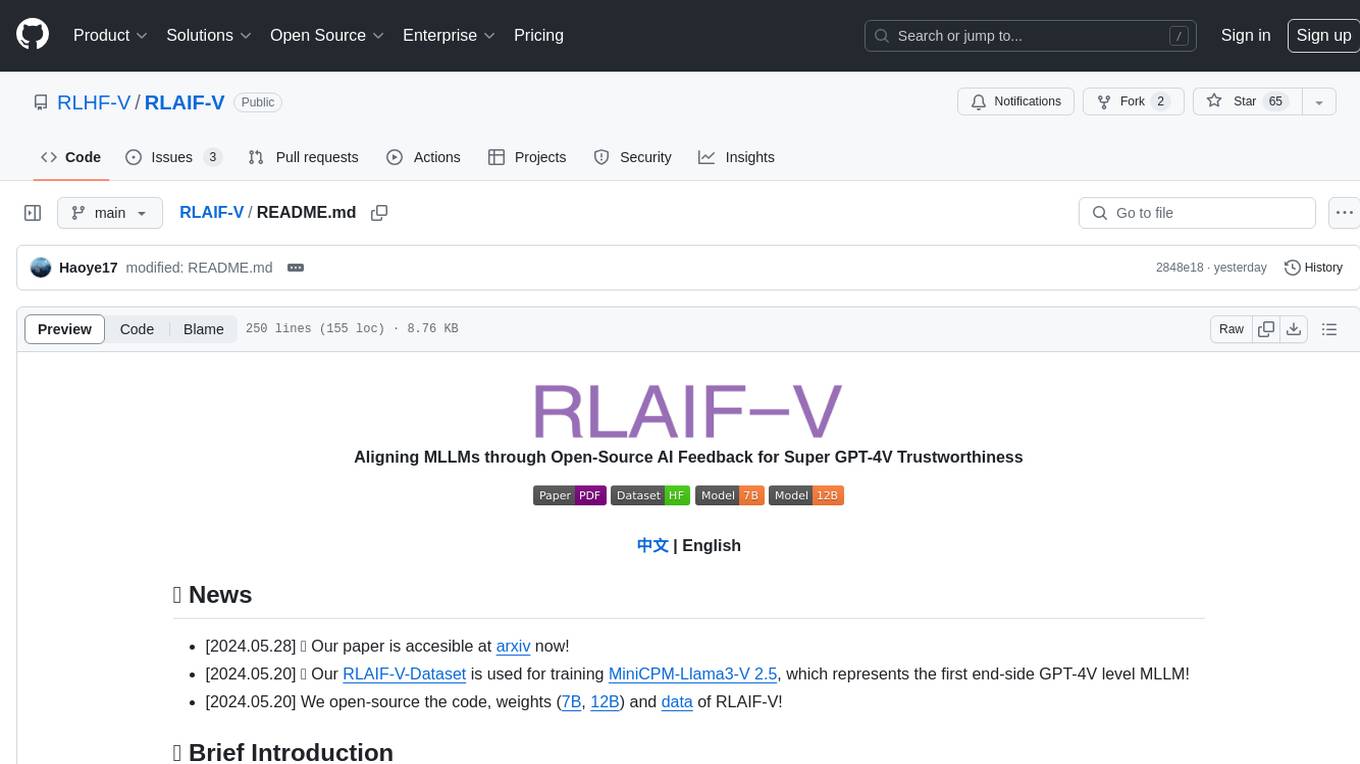
RLAIF-V
RLAIF-V is a novel framework that aligns MLLMs in a fully open-source paradigm for super GPT-4V trustworthiness. It maximally exploits open-source feedback from high-quality feedback data and online feedback learning algorithm. Notable features include achieving super GPT-4V trustworthiness in both generative and discriminative tasks, using high-quality generalizable feedback data to reduce hallucination of different MLLMs, and exhibiting better learning efficiency and higher performance through iterative alignment.
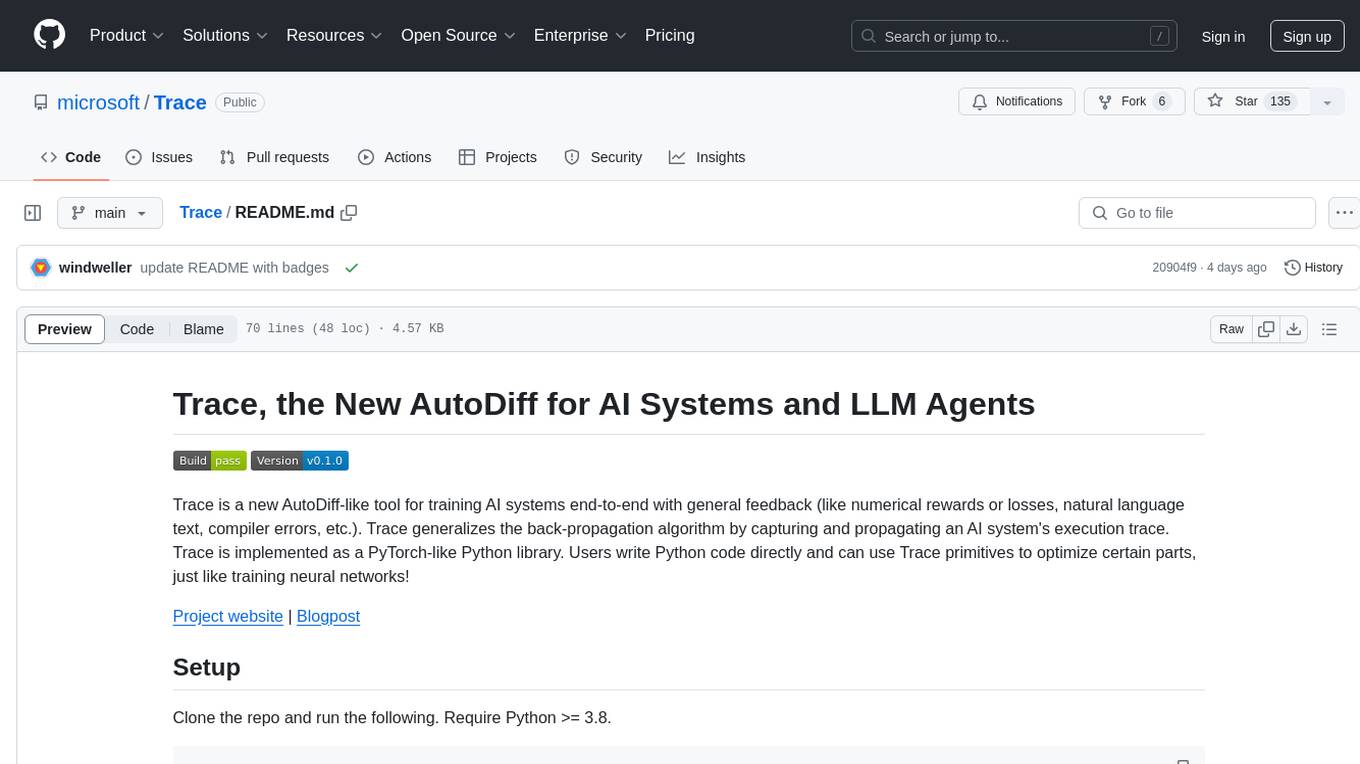
Trace
Trace is a new AutoDiff-like tool for training AI systems end-to-end with general feedback. It generalizes the back-propagation algorithm by capturing and propagating an AI system's execution trace. Implemented as a PyTorch-like Python library, users can write Python code directly and use Trace primitives to optimize certain parts, similar to training neural networks.
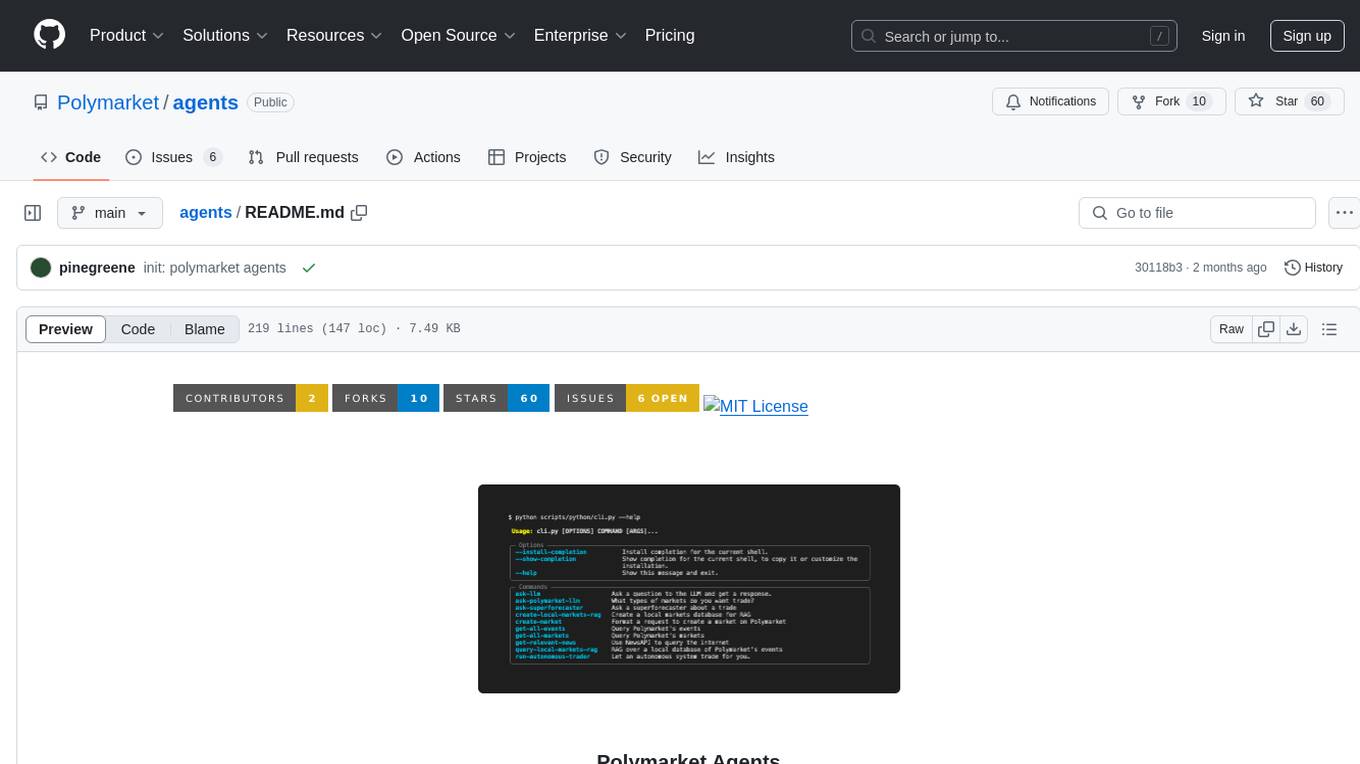
agents
Polymarket Agents is a developer framework and set of utilities for building AI agents to trade autonomously on Polymarket. It integrates with Polymarket API, provides AI agent utilities for prediction markets, supports local and remote RAG, sources data from various services, and offers comprehensive LLM tools for prompt engineering. The architecture features modular components like APIs and scripts for managing local environments, server set-up, and CLI for end-user commands.
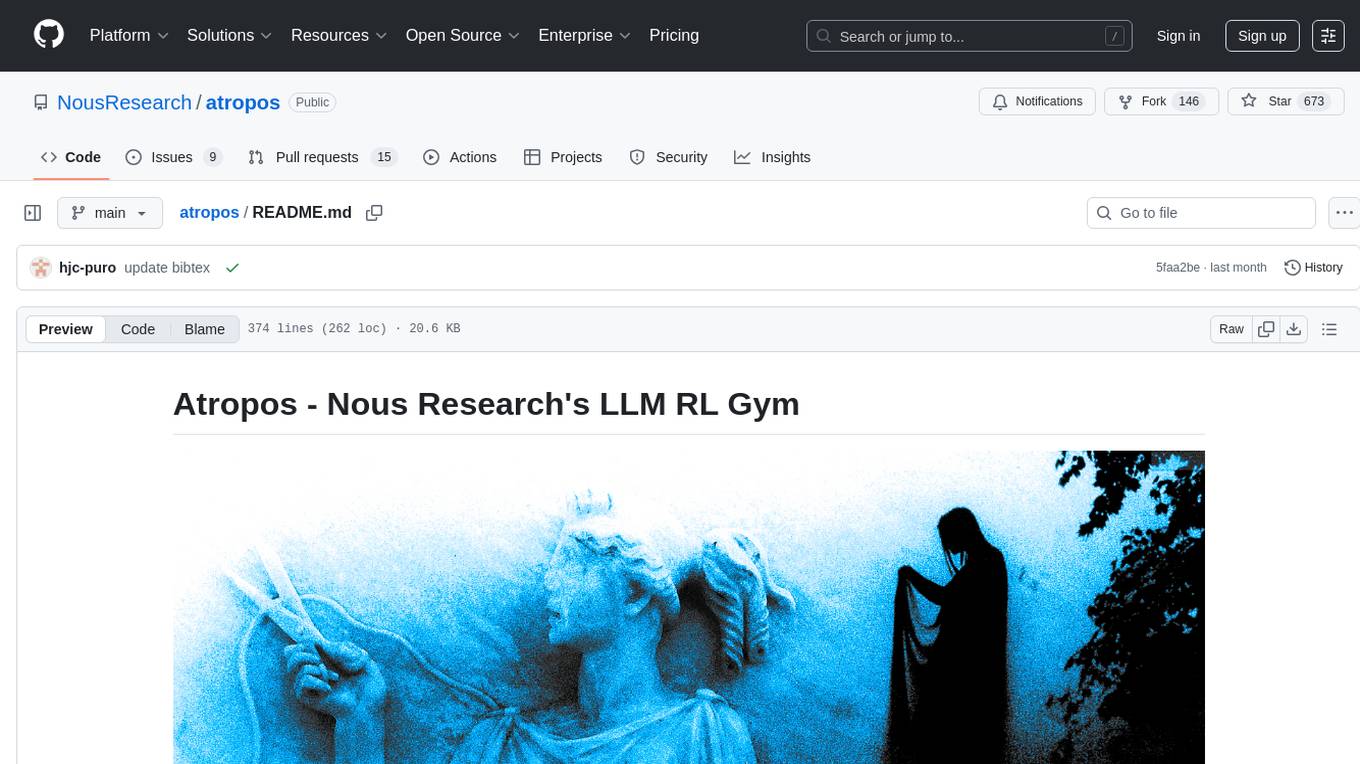
atropos
Atropos is a robust and scalable framework for Reinforcement Learning Environments with Large Language Models (LLMs). It provides a flexible platform to accelerate LLM-based RL research across diverse interactive settings. Atropos supports multi-turn and asynchronous RL interactions, integrates with various inference APIs, offers a standardized training interface for experimenting with different RL algorithms, and allows for easy scalability by launching more environment instances. The framework manages diverse environment types concurrently for heterogeneous, multi-modal training.
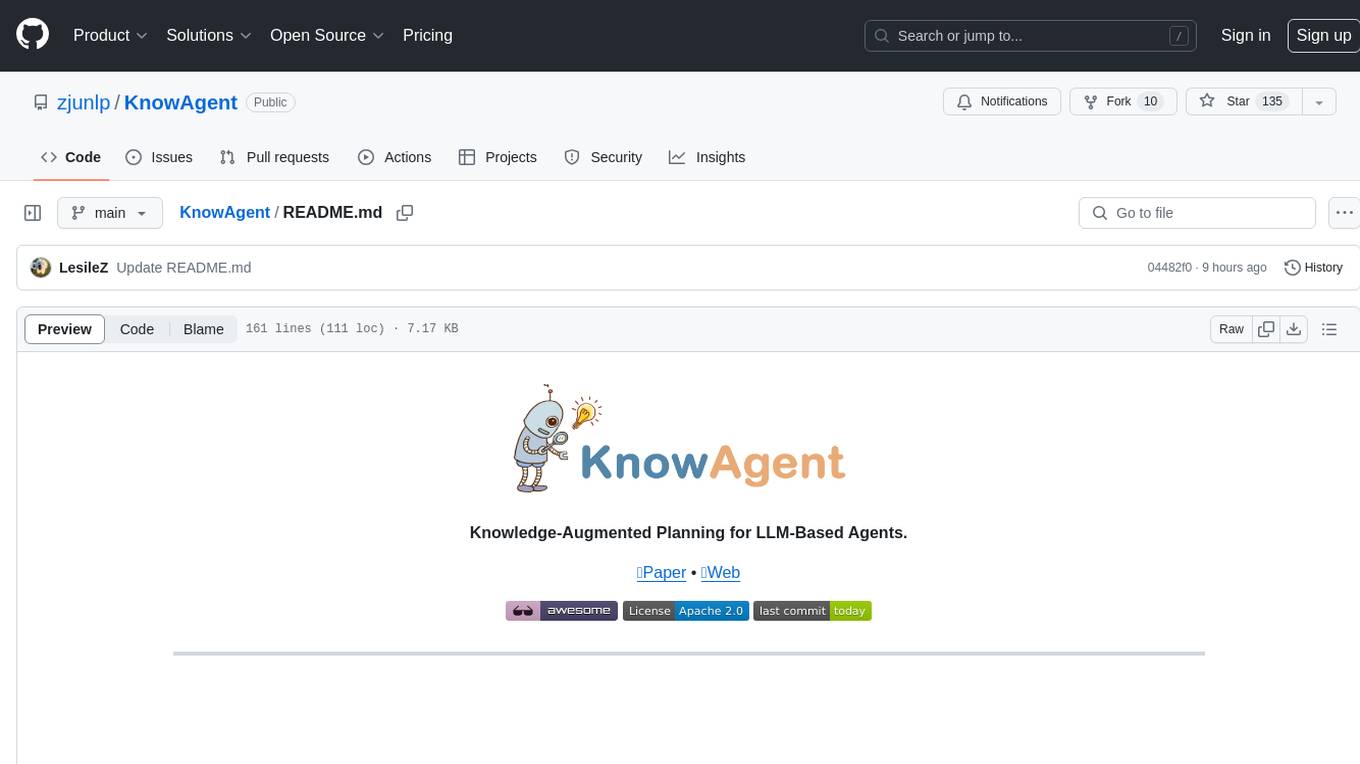
KnowAgent
KnowAgent is a tool designed for Knowledge-Augmented Planning for LLM-Based Agents. It involves creating an action knowledge base, converting action knowledge into text for model understanding, and a knowledgeable self-learning phase to continually improve the model's planning abilities. The tool aims to enhance agents' potential for application in complex situations by leveraging external reservoirs of information and iterative processes.
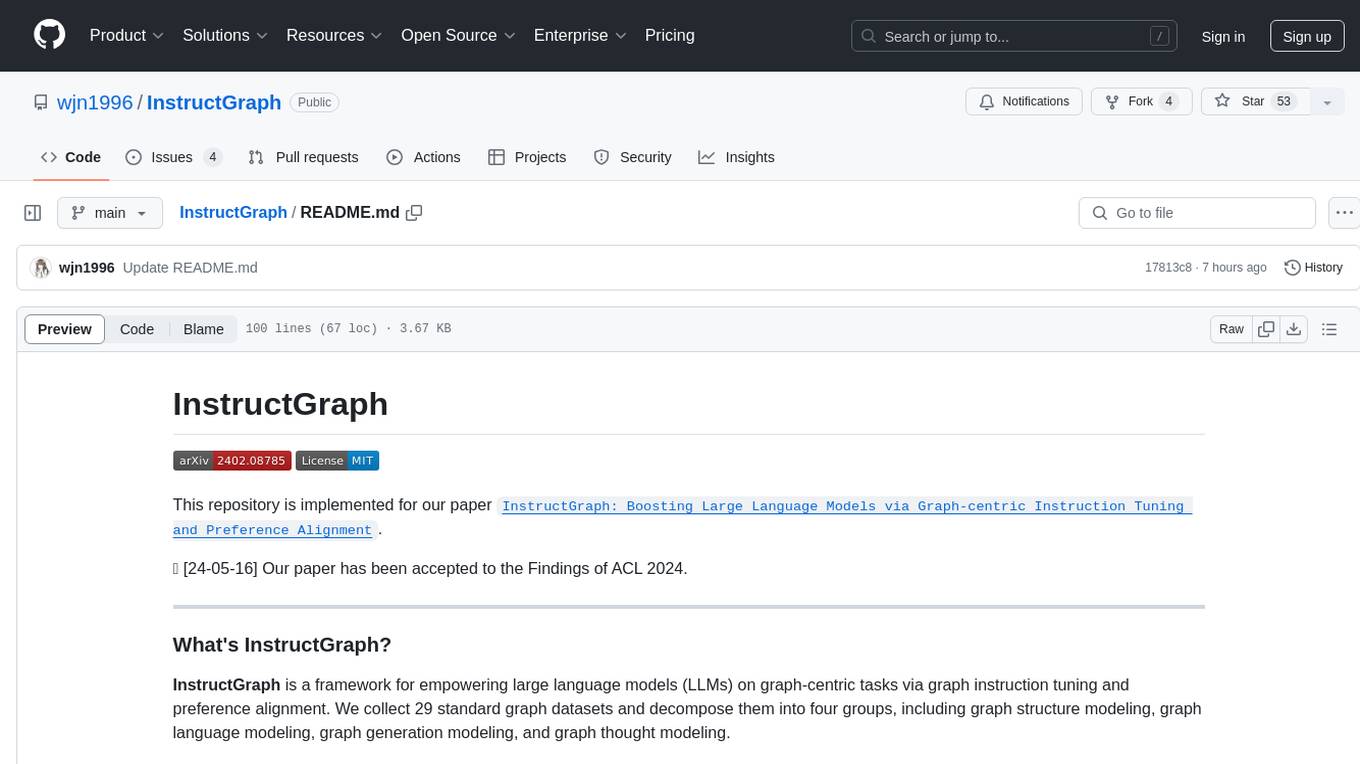
InstructGraph
InstructGraph is a framework designed to enhance large language models (LLMs) for graph-centric tasks by utilizing graph instruction tuning and preference alignment. The tool collects and decomposes 29 standard graph datasets into four groups, enabling LLMs to better understand and generate graph data. It introduces a structured format verbalizer to transform graph data into a code-like format, facilitating code understanding and generation. Additionally, it addresses hallucination problems in graph reasoning and generation through direct preference optimization (DPO). The tool aims to bridge the gap between textual LLMs and graph data, offering a comprehensive solution for graph-related tasks.
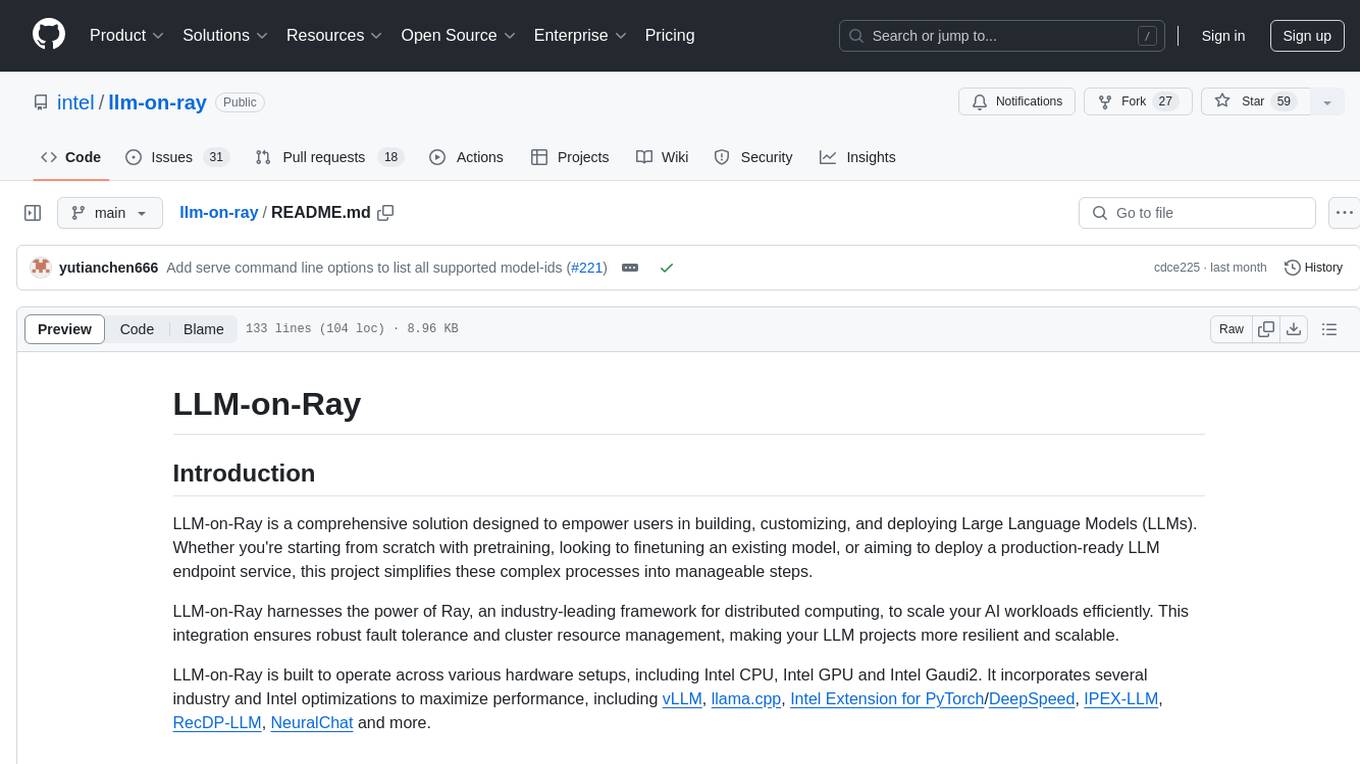
llm-on-ray
LLM-on-Ray is a comprehensive solution for building, customizing, and deploying Large Language Models (LLMs). It simplifies complex processes into manageable steps by leveraging the power of Ray for distributed computing. The tool supports pretraining, finetuning, and serving LLMs across various hardware setups, incorporating industry and Intel optimizations for performance. It offers modular workflows with intuitive configurations, robust fault tolerance, and scalability. Additionally, it provides an Interactive Web UI for enhanced usability, including a chatbot application for testing and refining models.
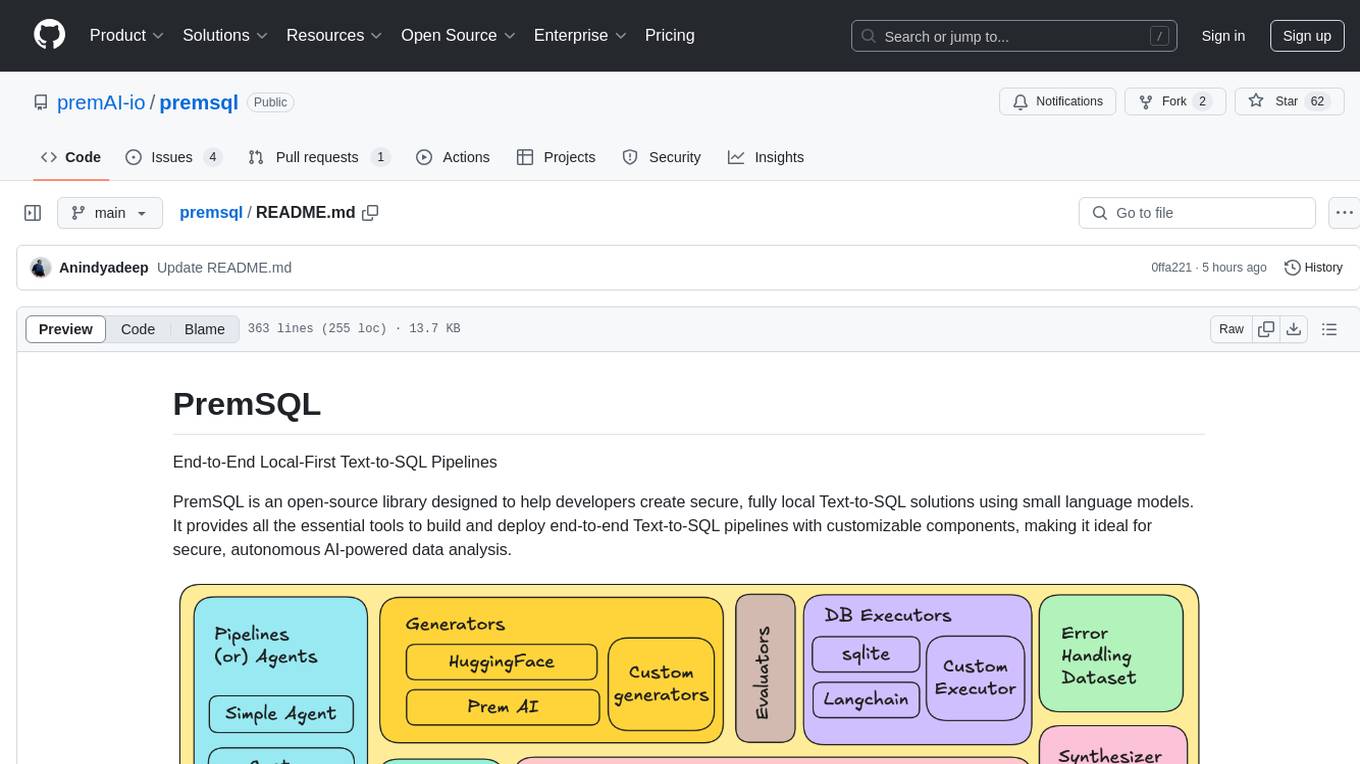
premsql
PremSQL is an open-source library designed to help developers create secure, fully local Text-to-SQL solutions using small language models. It provides essential tools for building and deploying end-to-end Text-to-SQL pipelines with customizable components, ideal for secure, autonomous AI-powered data analysis. The library offers features like Local-First approach, Customizable Datasets, Robust Executors and Evaluators, Advanced Generators, Error Handling and Self-Correction, Fine-Tuning Support, and End-to-End Pipelines. Users can fine-tune models, generate SQL queries from natural language inputs, handle errors, and evaluate model performance against predefined metrics. PremSQL is extendible for customization and private data usage.
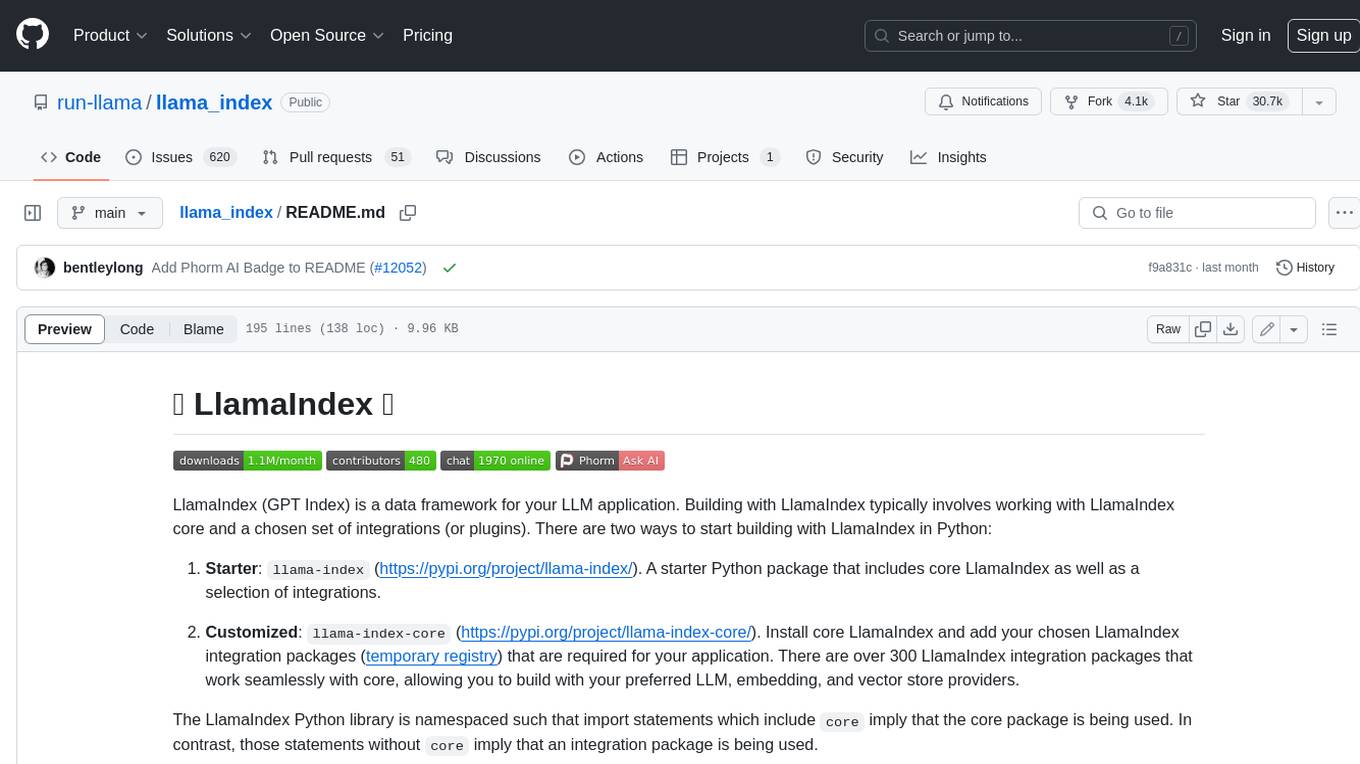
llama_index
LlamaIndex is a data framework for building LLM applications. It provides tools for ingesting, structuring, and querying data, as well as integrating with LLMs and other tools. LlamaIndex is designed to be easy to use for both beginner and advanced users, and it provides a comprehensive set of features for building LLM applications.
For similar tasks

habitat-lab
Habitat-Lab is a modular high-level library for end-to-end development in embodied AI. It is designed to train agents to perform a wide variety of embodied AI tasks in indoor environments, as well as develop agents that can interact with humans in performing these tasks.
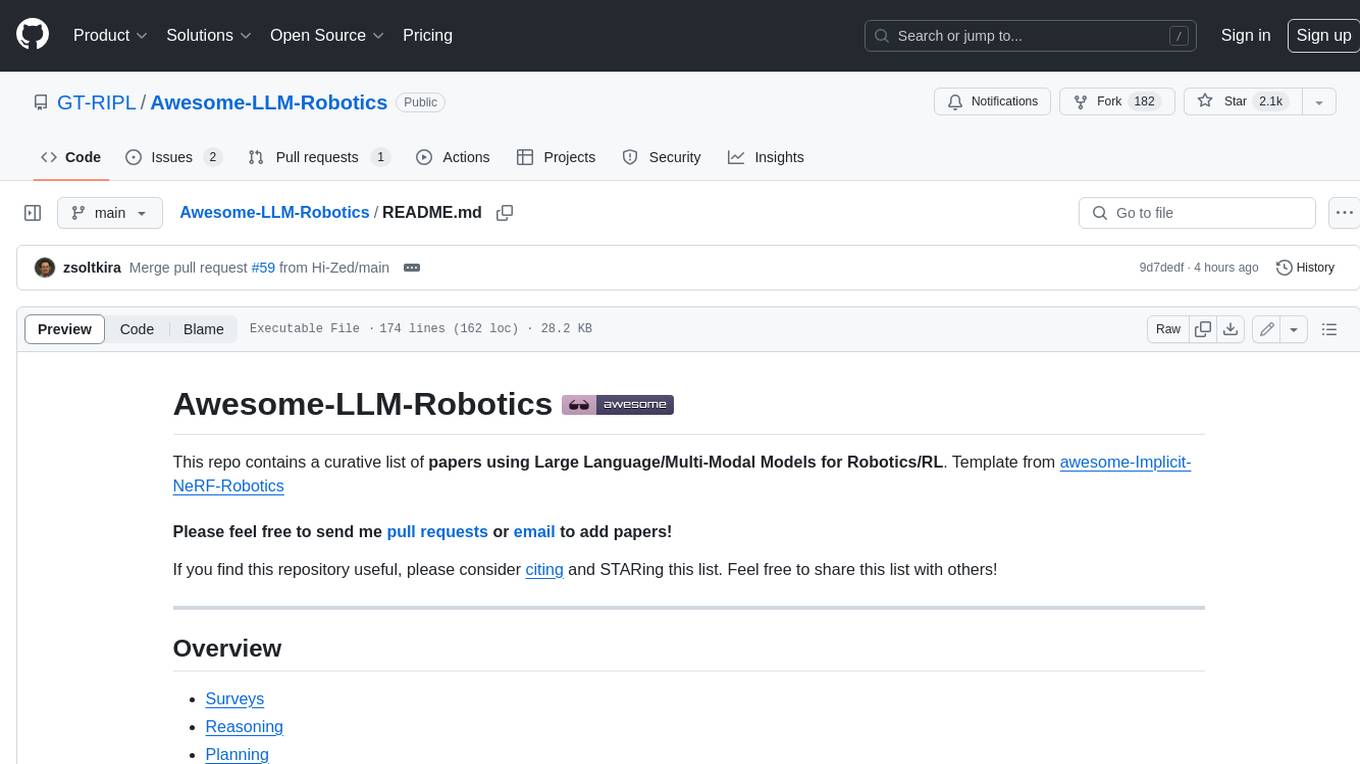
Awesome-LLM-Robotics
This repository contains a curated list of **papers using Large Language/Multi-Modal Models for Robotics/RL**. Template from awesome-Implicit-NeRF-Robotics Please feel free to send me pull requests or email to add papers! If you find this repository useful, please consider citing and STARing this list. Feel free to share this list with others! ## Overview * Surveys * Reasoning * Planning * Manipulation * Instructions and Navigation * Simulation Frameworks * Citation
For similar jobs

weave
Weave is a toolkit for developing Generative AI applications, built by Weights & Biases. With Weave, you can log and debug language model inputs, outputs, and traces; build rigorous, apples-to-apples evaluations for language model use cases; and organize all the information generated across the LLM workflow, from experimentation to evaluations to production. Weave aims to bring rigor, best-practices, and composability to the inherently experimental process of developing Generative AI software, without introducing cognitive overhead.

LLMStack
LLMStack is a no-code platform for building generative AI agents, workflows, and chatbots. It allows users to connect their own data, internal tools, and GPT-powered models without any coding experience. LLMStack can be deployed to the cloud or on-premise and can be accessed via HTTP API or triggered from Slack or Discord.

VisionCraft
The VisionCraft API is a free API for using over 100 different AI models. From images to sound.

kaito
Kaito is an operator that automates the AI/ML inference model deployment in a Kubernetes cluster. It manages large model files using container images, avoids tuning deployment parameters to fit GPU hardware by providing preset configurations, auto-provisions GPU nodes based on model requirements, and hosts large model images in the public Microsoft Container Registry (MCR) if the license allows. Using Kaito, the workflow of onboarding large AI inference models in Kubernetes is largely simplified.

PyRIT
PyRIT is an open access automation framework designed to empower security professionals and ML engineers to red team foundation models and their applications. It automates AI Red Teaming tasks to allow operators to focus on more complicated and time-consuming tasks and can also identify security harms such as misuse (e.g., malware generation, jailbreaking), and privacy harms (e.g., identity theft). The goal is to allow researchers to have a baseline of how well their model and entire inference pipeline is doing against different harm categories and to be able to compare that baseline to future iterations of their model. This allows them to have empirical data on how well their model is doing today, and detect any degradation of performance based on future improvements.

tabby
Tabby is a self-hosted AI coding assistant, offering an open-source and on-premises alternative to GitHub Copilot. It boasts several key features: * Self-contained, with no need for a DBMS or cloud service. * OpenAPI interface, easy to integrate with existing infrastructure (e.g Cloud IDE). * Supports consumer-grade GPUs.

spear
SPEAR (Simulator for Photorealistic Embodied AI Research) is a powerful tool for training embodied agents. It features 300 unique virtual indoor environments with 2,566 unique rooms and 17,234 unique objects that can be manipulated individually. Each environment is designed by a professional artist and features detailed geometry, photorealistic materials, and a unique floor plan and object layout. SPEAR is implemented as Unreal Engine assets and provides an OpenAI Gym interface for interacting with the environments via Python.

Magick
Magick is a groundbreaking visual AIDE (Artificial Intelligence Development Environment) for no-code data pipelines and multimodal agents. Magick can connect to other services and comes with nodes and templates well-suited for intelligent agents, chatbots, complex reasoning systems and realistic characters.









